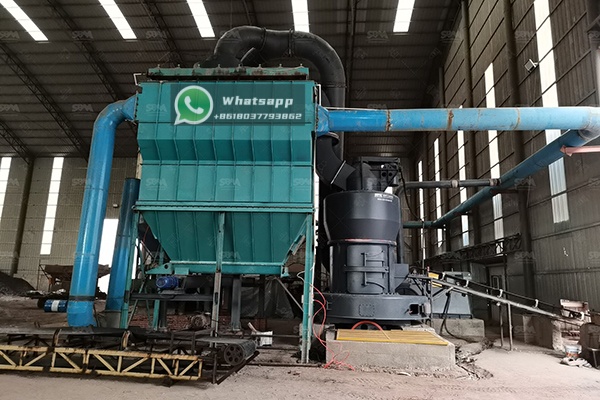The European mining industry has long been at the forefront of mineral processing technology, particularly in the treatment of complex sulfide ores containing lead and zinc. These valuable metals, often found together in polymetallic deposits, require sophisticated grinding and separation techniques to achieve optimal recovery rates. The grinding circuit represents one of the most critical stages in this process, directly impacting downstream flotation performance, energy consumption, and overall operational economics.
Modern European mills processing lead and zinc ores face unique challenges. The ore hardness varies significantly between deposits, with some zinc ores exhibiting particularly abrasive characteristics. Additionally, the fine dissemination of valuable minerals within the gangue matrix often necessitates ultra-fine grinding to achieve adequate liberation. This comprehensive article examines the grinding technologies employed in European lead-zinc operations and explores how advanced equipment from global manufacturers like Shanghai Zenith Machinery can enhance processing efficiency.

Lead and zinc ores typically occur as sulfide minerals – galena (PbS) and sphalerite (ZnS) – though oxide and carbonate forms are also mined. These ores present distinct grinding challenges:
European mills employ various grinding technologies tailored to their specific ore characteristics and production requirements. The selection between different mill types involves careful consideration of capital costs, operating expenses, maintenance requirements, and final product specifications.
Traditional ball mills have been the workhorse of mineral processing plants for decades. In European lead-zinc operations, these mills typically operate in closed circuit with hydrocyclones to achieve the desired product size distribution. The robust construction and operational simplicity of ball mills make them a reliable choice, though their energy efficiency has become a growing concern with rising power costs.
Shanghai Zenith Machinery offers advanced ball mill solutions that address these efficiency concerns. Their ball mills feature:
| Model | Rotate Speed (r/min) | Grinding Media Weight (t) | Output Capacity (t/h) | Motor Power (kW) |
|---|---|---|---|---|
| Φ900×1800 | 36-38 | 1.5 | 0.65-2 | 18.5 |
| Φ1500×4500 | 27 | 11 | 3-6 | 110 |
| Φ2700×4500 | 20.7 | 48 | 12-90 | 430 |
Vertical roller mills have gained significant traction in European mineral processing operations due to their superior energy efficiency compared to traditional ball mills. These mills combine grinding, drying, classification, and conveying in a single unit, reducing both footprint and energy consumption by 30-50% compared to conventional circuits.
For lead-zinc operations requiring precise control over product fineness, Shanghai Zenith Machinery’s LM Vertical Grinding Mill represents an excellent solution. This technology integrates five functions—crushing, grinding, powder selection, drying, and material conveying—into a single machine. It offers a small occupational area, produces a fine final powder, and provides an eco-friendly production solution perfectly suited to European environmental standards.
| Model | Plate diameter (mm) | Capacity (t/h) | Output fineness (μm) | Max feed size (mm) | Main motor (kW) |
|---|---|---|---|---|---|
| LM130K | 1300 | 10-28 | 170-40 | <38 | 200 |
| LM190K | 1900 | 23-68 | 170-40 | <45 | 500 |
| LM280K | 2800 | 50-170 | 170-45 | <50 | 1250 |

Some European lead-zinc operations require ultra-fine grinding to liberate finely disseminated minerals or to meet specific product specifications for specialized applications. For these demanding requirements, stirred mills and other advanced fine grinding technologies have proven effective.
Shanghai Zenith Machinery’s LUM Ultrafine Vertical Mill is particularly well-suited for these applications. This advanced mill integrates grinding, drying, classifying, and transportation while occupying minimal space. It is designed to produce products with high content of end-fines and features intelligent control for easier maintenance. The LUM series can achieve product fineness down to 5 microns, making it ideal for operations requiring extensive liberation of finely disseminated lead-zinc minerals.
| Model | Main machine power (kW) | Capacity (t/h) | Size distribution D97 (μm) |
|---|---|---|---|
| LUM1525 | 220-250 | 1.6-11.5 | 5-30 |
| LUM1632 | 280-315 | 2.0-13.5 | 5-30 |
| LUM1836 | 355-400 | 2.3-15 | 5-30 |
A major European mining operation recently upgraded its grinding circuit to address rising energy costs and the need for improved product quality. The operation processes approximately 2,500 tonnes per day of complex lead-zinc ore with variable hardness characteristics. After extensive technical evaluation, the company selected Shanghai Zenith Machinery’s MTW Trapezium Grinding Mill for its primary grinding circuit.
The implementation yielded significant benefits:
The MTW Trapezium Grinding Mill’s multiple patents, compact structure, long service life, and eco-friendly design made it particularly suitable for this European operation facing strict environmental regulations.
| Model | Max. Feed Size (mm) | Final size (mm) | Capacity (t/h) | Main motor (kW) | Fan motor (kW) |
|---|---|---|---|---|---|
| MTW175G | <40 | 1.6-0.045 | 9.5-25 | 160 | 200 |
The European lead-zinc processing industry continues to evolve, driven by several key trends:
Manufacturers like Shanghai Zenith Machinery are at the forefront of these developments, incorporating smart technologies and sustainable design principles into their grinding equipment. Their ongoing research in ultra-fine powder grinding positions them as valuable partners for European operations seeking to maintain competitiveness in a challenging market.

The grinding of lead and zinc ores in European mills represents a sophisticated process requiring careful equipment selection and operational optimization. The unique characteristics of these ores, combined with stringent European environmental and efficiency standards, demand advanced grinding solutions from experienced manufacturers.
Shanghai Zenith Machinery Co., Ltd., with its comprehensive range of grinding equipment including the MTW Trapezium Grinding Mill, LM Vertical Grinding Mill, and LUM Ultrafine Vertical Mill, offers European operations reliable, efficient, and environmentally responsible solutions. Their expertise in ultra-fine powder grinding, demonstrated through successful implementations across various mineral processing applications, makes them a valuable partner for lead-zinc operations seeking to enhance their grinding performance while reducing operational costs and environmental impact.
As the European mining industry continues to evolve toward greater sustainability and digitalization, partnerships with innovative equipment manufacturers will be essential for maintaining global competitiveness in lead and zinc processing.